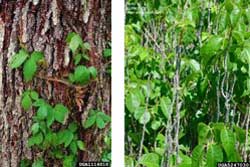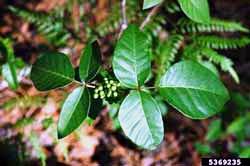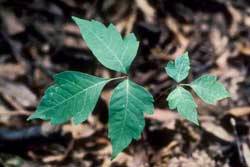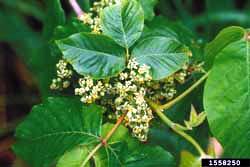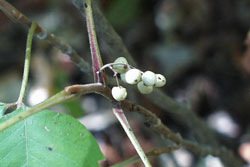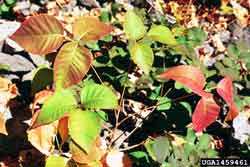Poison Ivy—Toxicondendron radicans
The rash associated with poison ivy is caused by the oil urushiol, which is found in all parts of the plant. Poison ivy grows as a vine or shrub and can be found in fields, pastures, woodlands, farms and yards.
Click on images to view full-size
Identification and Control Information
- Fact Sheet with Description and Control Options (PDF) —Clemson University Cooperative Extension Service
- Fact Sheet with Description and Control Options (PDF) —Pennsylvania State University
- Fact Sheet with Description and Management Options (PDF) —Cornell Cooperative Extension
- Tips for Managing Poison Ivy (PDF) —Maine Integrated Pest Management Council
- Poison Ivy, How to Identify and Control—Missouri Department of Conservation
- Integrated Pest Management: Dealing with Poison Ivy—University of Connecticut
- Poison Oak and Ivy Management (PDF) —Journal of Pesticide Reform, Northwest Coalition for Alternatives to Pesticides (NCAP)
More Information
- Poisonous Plants: Identification and Recommendations for Protecting Workers—National Institute for Occupational Safety and Health
[Photos, left to right: Charles T. Bryson, USDA Agricultural Research Service, Bugwood.org; Richard Old, XID Services, Inc., Bugwood.org; David J. Moorhead, University of Georgia, Bugwood.org; Ohio State Weed Lab Archive, The Ohio State University, Bugwood.org; Catherine Herms, The Ohio State University, Bugwood.org; Paul Wray, Iowa State University, Bugwood.org; Steve Dewey, Utah State University, Bugwood.org.]
